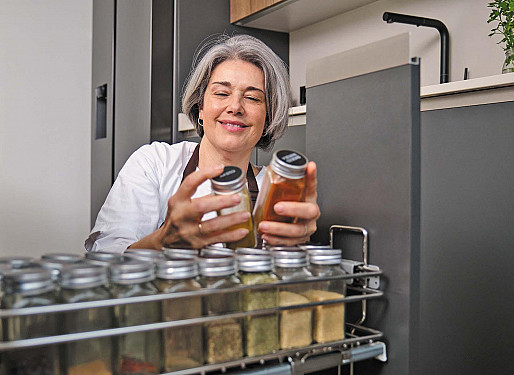Cut salt - it won't affect your iodine intake
Iodized salt provides only a small fraction of daily iodine intake.
The surplus of sodium in the American diet contributes to a host of cardiovascular problems, from high blood pressure and stroke to heart attack, heart failure, and more. Cutting back on salt is generally good for the heart and arteries. But could this strategy have the unintended consequence of making some Americans deficient in iodine?
That's not likely, because salt provides only a fraction of daily iodine intake for most Americans.
Why we need iodine
Iodine is an element found mainly in seawater and in soil close to the sea. The human body needs iodine to make thyroid hormone. During fetal development, infancy, and childhood, thyroid hormone is essential for the brain and nervous system to develop normally. Too little iodine, and thus too little thyroid hormone, can lead to mental retardation, dwarfism, hearing loss, and other problems. Later in life, thyroid hormone controls metabolism. Adults who don't take in enough iodine can develop a goiter (a swelling of the butterfly-shaped thyroid gland in the neck), and the low output of thyroid hormone can lead to sluggish metabolism, poor thinking skills, infertility, thyroid cancer, and other conditions.
Goiter was once a big problem in wide swaths of the United States. In the early 1920s, Dr. David Marine of the Cleveland Clinic described goiter as "one of the most important causes of physical and mental degeneracy with which society has had and still has to deal."
Borrowing an idea from the Swiss, a group of U.S. experts suggested adding iodine to salt. Iodized salt was first sold in Michigan in May 1924, and across the nation later that year. Within 10 years, the percentage of people in Michigan with goiter had fallen from about 30% to under 2%. In the U.S., it is rare today.
In the 1950s and 1960s, the use of iodine-based disinfectants in the dairy industry and iodine-based conditioners in the commercial baking industry put many Americans on track to getting too much iodine.
The situation has stabilized in recent years, with national nutrition surveys showing that most Americans get enough iodine, and only small numbers get too little or too much.
Current dietary guidelines recommend that men and women ages 19 and older get 150 micrograms of iodine a day. Women who are pregnant should get 220 micrograms, and women who are breast-feeding an infant should get 290 micrograms.
Salt and iodine
Most Americans take in more sodium than they need. Almost all of it comes from salt. But here's the rub: between 75% and 90% of sodium in the average American's diet comes from prepared or processed food, and most food companies don't use iodized salt. The so-called hidden salt in processed food is a great place to start trimming sodium from your diet, and cutting back on it will have little effect on your iodine intake.
To get all your iodine from salt, you would need more than half a teaspoon of iodized salt a day. That's two-thirds of the daily allotment of sodium (1,500 milligrams) recommended by the American Heart Association.
It makes more sense to get your iodine from food. That way you can cut back on salt and not worry about losing out on this important element. Ocean-caught or ocean-farmed fish and shellfish tend to be naturally rich in iodine. Other good sources include milk, cheese, yogurt, eggs, and vegetables grown in iodine-rich soil. Multivitamin pills that also contain minerals usually provide 150 micrograms of iodine.
Disclaimer:
As a service to our readers, Harvard Health Publishing provides access to our library of archived content. Please note the date of last review or update on all articles.
No content on this site, regardless of date, should ever be used as a substitute for direct medical advice from your doctor or other qualified clinician.















